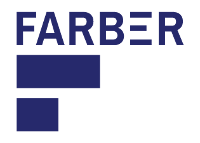You’ve heard about them, but you have questions. That’s normal! This blog post is intended to give you some basic information, but please reach out to me if you have any questions!
An RESP is a Registered Education Savings Plan. This is a tax-sheltered account, registered with the Canadian government, into which they will provide additional grant money.
Basically, it means that you open a special account and invest money into it, and the Canadian government adds additional money to provide extra growth to the beneficiary of the account for their post-secondary education.
Why use an RESP?
There are multiple reasons to use an RESP over many conventional accounts.
- Government Grants
This is by far the most common reason given for people to use RESPs. The government of Canada may provide up to $7,200 per child in grants. - Tax-deferred Growth
Any growth is tax-deferred, until withdrawal, and as long as the withdrawal is done according to the guidelines, then the income is applied to the beneficiary! Since most post-secondary students are not making high incomes during the university years, this means that the eventual tax rate could be significantly lower. - Investment Options
Don’t let the name fool you – it’s not just a savings plan. Depending on your provider, you may have many options of investments. A bank account, a group RESP plan, or an investment portfolio with which your advisor can work with you.
How does the RESP work?
- For any amount you put into an RESP, the government will add a grant of 20%, up to a maximum of $500 per year per beneficiary. That means that if you maximize your grants, you’ll be depositing $2,500 per year, and the government will add another $500, making the total $3,000.
- Depending on the reported income of the investor, they may be eligible for an additional CLB grant.
- When the beneficiary is attends a post-secondary education, they take the money to use towards the post-secondary education.
So What Are the Grants?
There are two grants available. CESG and CLB.
CESG
- This is based on deposits. As mentioned above, the government will match 20% of your deposits, up to $500 per year.
- There is a lifetime maximum of $7,200 available per beneficiary across all RESPs
- Any year where the maximum was not reached can be made up in future years. At any time, you can make up for up to one previous year.
- Example: If you start an RESP for a 5-year old, then you can actually maximize your grants with a deposit of $5,000 per year for the first 5 years, making up for years 0-4.
CLB
- Once you have an RESP open, (as long as you don’t refuse the grant) the government will automatically credit your account with the CLB.
- The CLB is based on a combination of the number of children you have, and your declared income.
- The amounts are $500 for the first year, and then $100 for each additional year that you qualify, up to a maximum age or $2,000.
How can my child qualify?
- The Canadian government keeps a list of recognized institutions, worldwide, that qualify. Effectively, it includes pretty much any institute of higher learning, but of course, do check the list before sending your child.
- The list can be found at this link: https://www.canada.ca/en/services/benefits/education/education-savings/paying-education.html#_eligible
What are the terms for taking out the money?
- With financial institutions such as investors, banks, mutual fund providers, etc., the rules are pretty straightforward:
- Once your child is admitted to a full time program at the school, they will have access to up to $5,000.
- Once they have completed 13 weeks of full-time enrollment, they will have access to the remainder of the money available in the RESP.
- Part-time studies have different limitations – contact your advisor for more information
- For group RESP providers, they have group-specific rules, and you’d have to discuss with the RESP provider.
What happens if my child doesn’t go to a post-secondary school?
- If you take out the money before the the child is enrolled, or the child decides not to pursue education at a post-secondary school, certain penalties may ensue, which may include
- Repayment of all government grants
- Repayment of all growth
- You could also have the option of changing the beneficiary, transferring to another registered savings plan, etc. All of these are best discussed with your advisor at decision time, to ensure that you do what is best for your situation.
As always, reach out to your financial advisor for more information, or book a half-hour meeting with me to speak about your particular needs and concerns.

